High blood sugar affects millions of people worldwide, yet many don’t understand what actually happens inside their body when glucose levels rise. Whether someone has diabetes or experiences occasional spikes, elevated blood sugar triggers a cascade of physical changes that can range from mild discomfort to serious health complications.
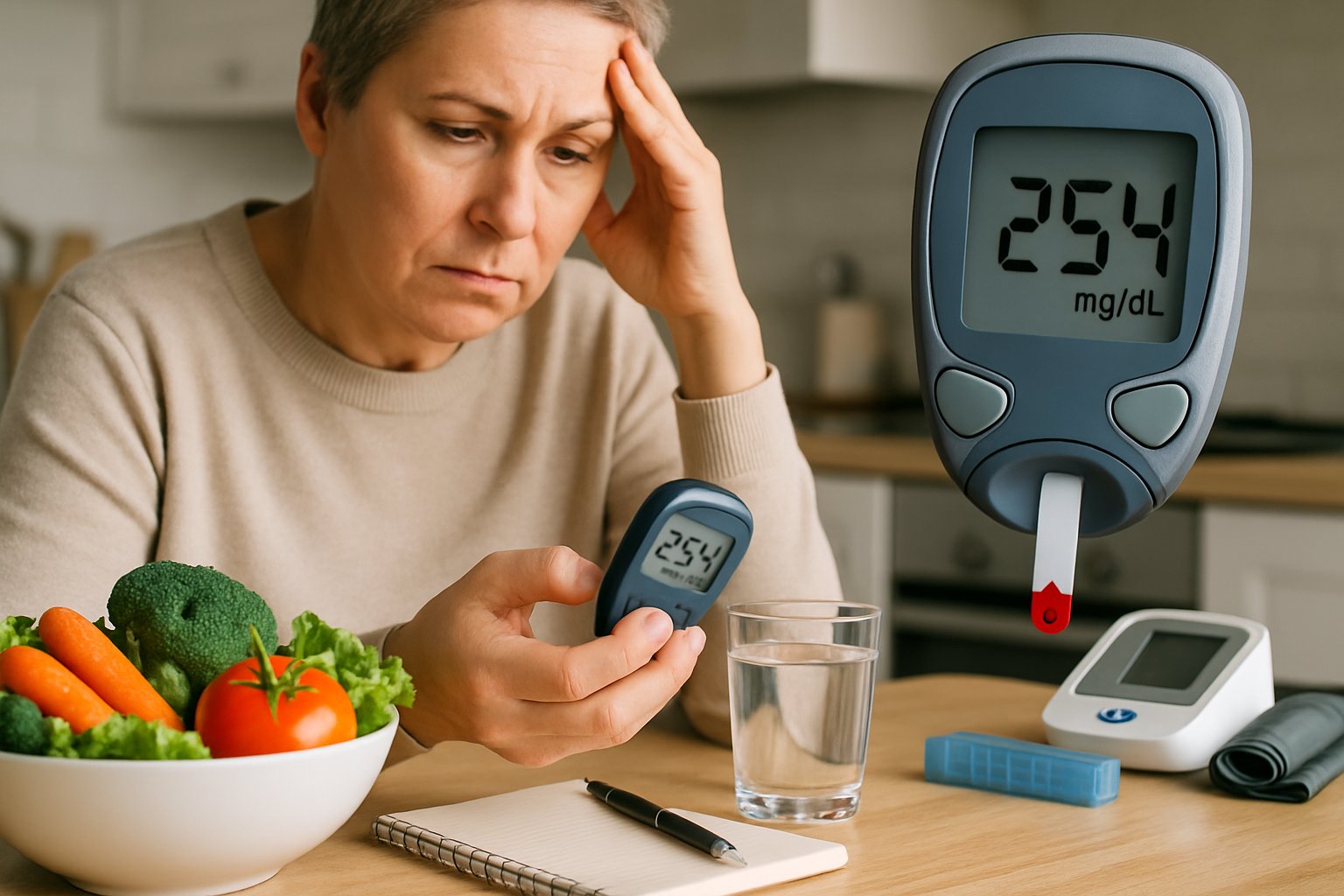
When blood sugar rises above normal levels, the body struggles to process glucose efficiently, leading to symptoms like increased thirst, frequent urination, fatigue, and blurred vision. Early symptoms of hyperglycemia[1] can develop gradually and may go unnoticed for extended periods. Left untreated, high blood sugar damages blood vessels and organs throughout the body.
Understanding what happens during high blood sugar episodes empowers people to recognize warning signs early and take appropriate action. The body’s response to elevated glucose involves complex processes that affect everything from energy production to organ function, making it crucial to know how to respond effectively.
Key Takeaways
- High blood sugar causes the body to struggle with glucose processing, resulting in symptoms like excessive thirst, frequent urination, and fatigue
- Prolonged high blood sugar damages blood vessels and can lead to serious complications affecting the heart, kidneys, eyes, and nerves
- Early recognition of symptoms and proper management can prevent dangerous complications and maintain better overall health
Understanding High Blood Sugar
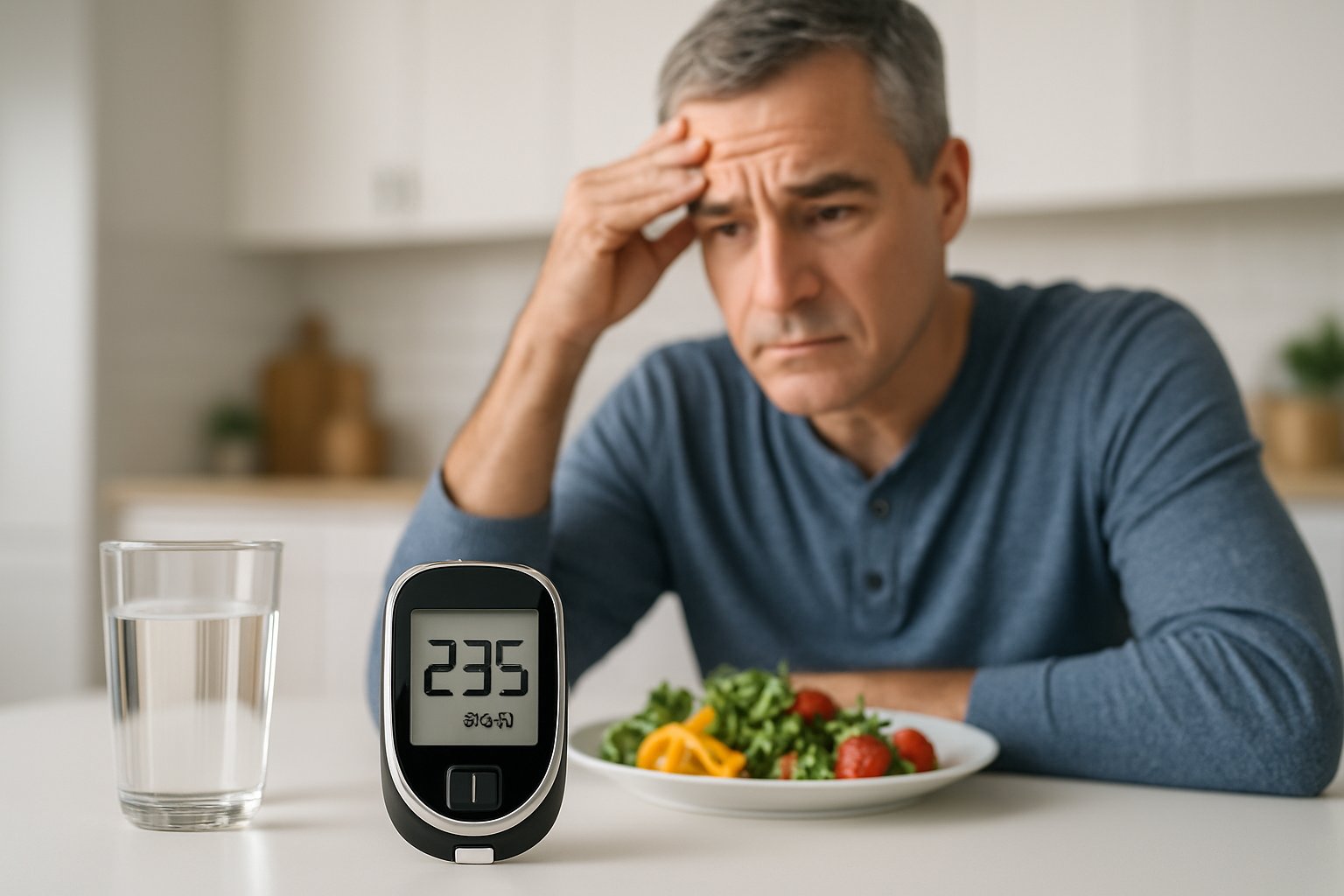
High blood sugar occurs when glucose levels in the bloodstream rise above normal ranges, often due to problems with insulin production or how the body uses insulin. Blood sugar is measured through specific tests that show glucose concentrations, while insulin from the pancreas helps control these levels.
What Is High Blood Sugar (Hyperglycemia)
High blood sugar, also called hyperglycemia, happens when glucose levels in the blood become too high. Normal blood sugar levels range from 70 to 100 mg/dL when fasting.
Hyperglycemia is common in people who have diabetes[1]. However, it can also affect people without diabetes during illness or stress.
Blood sugar levels above 126 mg/dL when fasting indicate diabetes. Levels between 100-125 mg/dL suggest prediabetes.
Many people don’t notice symptoms until their blood sugar reaches 250 mg/dL or higher. People without diabetes often feel symptoms at lower levels than those with the condition.
How Blood Sugar Is Measured
Blood glucose is measured using several different tests. Each test provides specific information about sugar levels over different time periods.
Common blood sugar tests include:
- Fasting blood glucose: Measures sugar after 8 hours without food
- Random blood glucose: Checks sugar at any time of day
- Oral glucose tolerance test: Measures sugar before and after drinking a glucose solution
- Hemoglobin A1C: Shows average blood sugar over 2-3 months
Blood sugar meters allow people to check their levels at home. These devices use small blood samples from finger pricks.
The American Diabetes Association recommends specific target ranges for different groups. Adults with diabetes should aim for 80-130 mg/dL before meals.
The Role of Glucose and Insulin
Glucose serves as the body’s main source of energy. It comes from foods like bread, fruit, and vegetables. The bloodstream carries glucose to cells throughout the body.
Insulin acts like a key that unlocks cells so glucose can enter. The pancreas makes insulin when blood sugar levels rise after eating.
The insulin process works in these steps:
- Blood glucose rises after meals
- Pancreas releases insulin into bloodstream
- Insulin helps cells absorb glucose
- Blood sugar levels return to normal
When this system fails, hyperglycemia develops. Type 1 diabetes occurs when the pancreas stops making insulin. Type 2 diabetes happens when cells don’t respond properly to insulin or the pancreas doesn’t make enough.
People with diabetes may need insulin injections or medications to help control their blood glucose levels.
What Happens in Your Body During High Blood Sugar
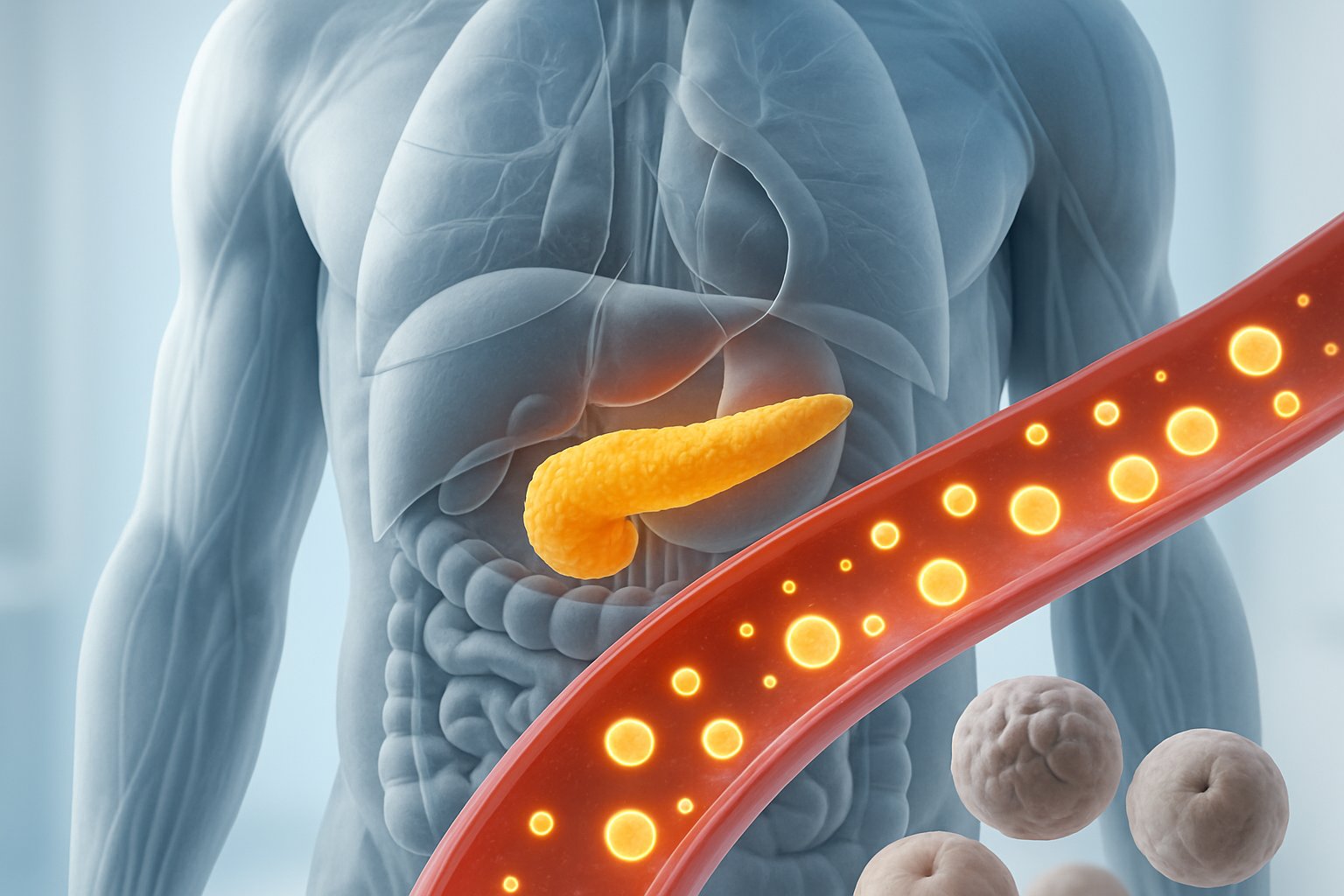
When blood sugar rises above normal levels, the body struggles to process excess glucose effectively. This triggers a cascade of responses that affect multiple organ systems and can lead to both immediate and long-term complications.
How Glucose Affects the Body
High blood glucose happens when the body has too little insulin[2] or cannot use insulin properly. Glucose is the primary fuel source for cells throughout the body.
When glucose levels become elevated, it acts like a thick syrup in the bloodstream. This makes blood flow more difficult and forces the heart to work harder to pump blood through vessels.
The excess glucose begins to damage blood vessel walls. Small blood vessels become particularly vulnerable to this damage. Over time, this can affect circulation throughout the body.
Key glucose effects include:
- Thickened blood consistency
- Reduced oxygen delivery to tissues
- Impaired cellular function
- Increased inflammation in blood vessels
Short-Term Impacts on Organs and Systems
The kidneys respond first by trying to filter out excess glucose through urine. This process pulls water from the body, leading to frequent urination[2] and dehydration.
The brain depends heavily on steady glucose levels. When blood sugar spikes, it can cause difficulty concentrating and fatigue. The person may feel confused or irritable.
The cardiovascular system works overtime to pump thicker blood. Blood pressure may rise as the heart compensates for reduced circulation efficiency.
Organ system responses:
| System | Response |
|---|---|
| Kidneys | Increased urine production |
| Brain | Reduced cognitive function |
| Heart | Elevated blood pressure |
| Eyes | Blurred vision from fluid shifts |
Immediate Body Responses
The pancreas attempts to produce more insulin to lower blood sugar levels. In people with diabetes, this response may be inadequate or absent entirely.
The body triggers increased thirst[2] as it tries to replace fluids lost through frequent urination. This creates a cycle of drinking and urinating.
When insulin cannot effectively move glucose into cells, the body may start breaking down fat for energy. This process creates waste products called ketones that can build up in the blood.
The immune system becomes less effective at fighting infections. White blood cells function poorly in high glucose environments. This makes the person more susceptible to illness and slower wound healing.
Symptoms of High Blood Sugar
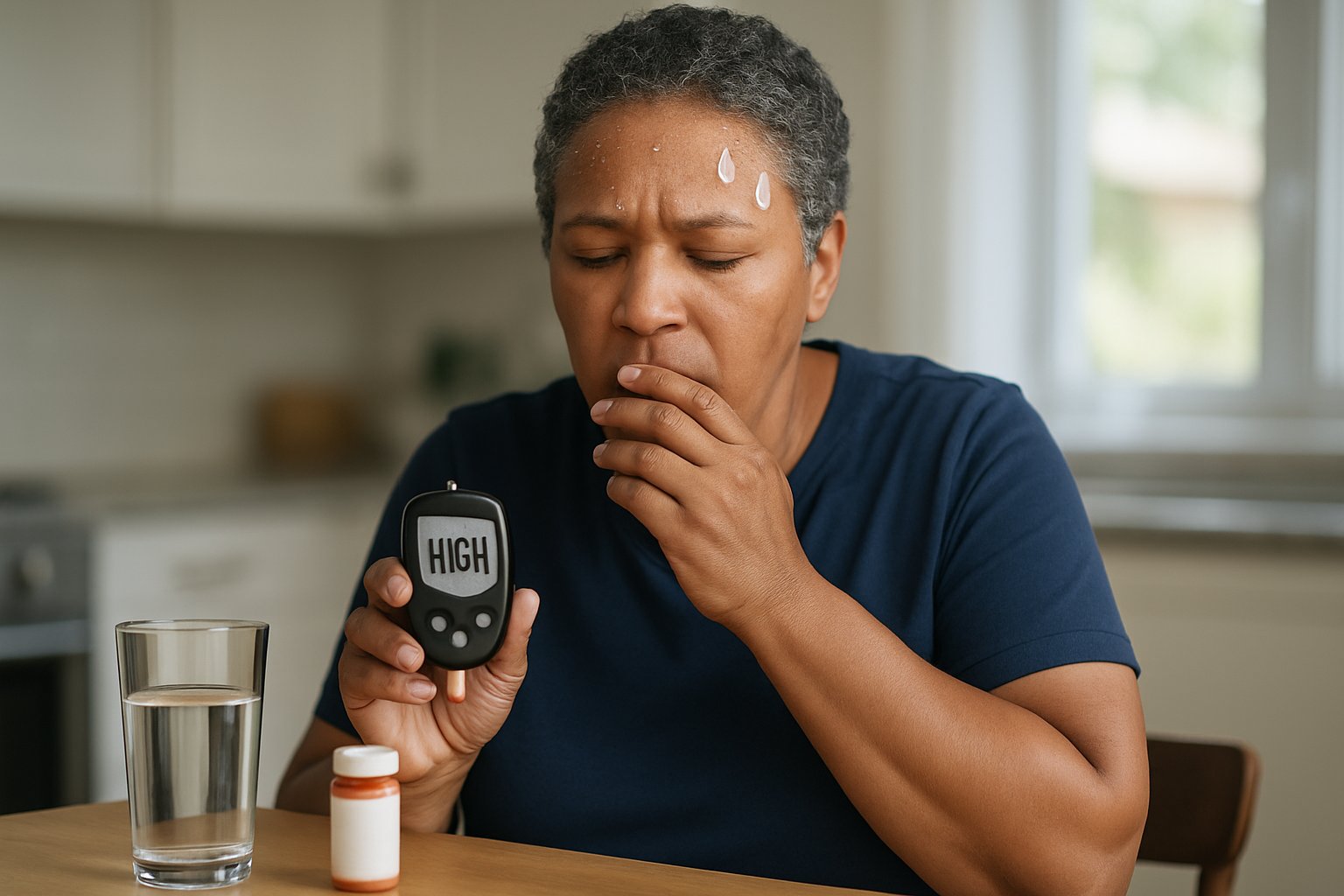
High blood sugar symptoms range from mild early warning signs like increased thirst and frequent urination to severe emergency symptoms including confusion and difficulty breathing. The severity and timing of symptoms depend on how high blood sugar levels rise and how quickly the elevation occurs.
Early Warning Signs
The body gives clear signals when blood sugar begins to rise above normal levels. Increased thirst and frequent urination[1] are typically the first symptoms people notice.
Most Common Early Symptoms:
- Increased thirst that feels unquenchable
- Frequent urination, especially at night
- Unusual hunger even after eating
- Mild headaches
These symptoms occur because the kidneys work harder to filter excess glucose from the blood. The body tries to dilute high blood sugar by increasing fluid intake.
Many people dismiss these early signs as stress or dehydration. However, recognizing them early can prevent more serious complications from developing.
Common Manifestations
As blood sugar levels stay elevated, additional symptoms appear that affect daily activities. Fatigue and blurred vision[3] become more noticeable during this stage.
Physical Symptoms Include:
- Persistent fatigue and weakness
- Blurred or changing vision
- Slow healing of cuts and wounds
- Frequent skin or vaginal infections
Additional Signs:
- Unexplained weight loss
- Dry mouth and skin
- Tingling in hands or feet
- Difficulty concentrating
The glucose level at which people experience symptoms varies. Many individuals don’t notice symptoms until their blood sugar reaches 250 mg/dL or higher.
People without diabetes often experience these symptoms at lower blood sugar levels than those already diagnosed.
Severe and Emergency Symptoms
When high blood sugar goes untreated, it can develop into diabetic ketoacidosis (DKA). This life-threatening condition requires immediate medical attention.
Emergency Warning Signs:
- Nausea and vomiting
- Severe dehydration
- Abdominal pain
- Fruity-smelling breath
- Deep, labored breathing
- Rapid heartbeat
Critical Symptoms:
- Confusion and disorientation
- Loss of consciousness
- Extreme weakness
These symptoms indicate the blood has become acidic due to high ketone levels. The body burns fat for energy when it cannot use glucose properly.
Anyone experiencing these severe symptoms should seek emergency medical care immediately. DKA can lead to coma or death if left untreated.
Health Risks and Complications of High Blood Sugar
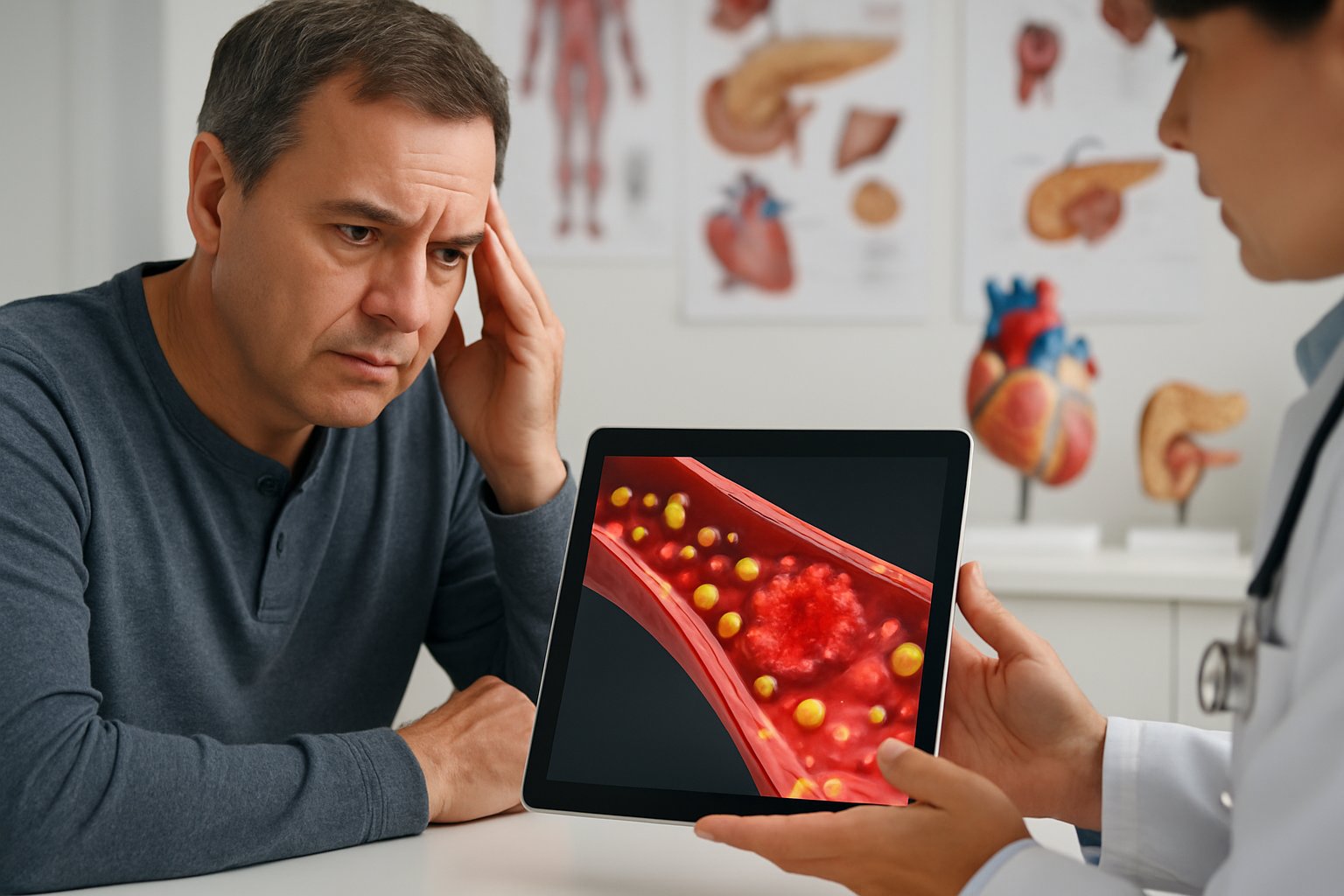
High blood sugar damages blood vessels[4] throughout the body when left uncontrolled. The complications range from immediate symptoms like increased thirst to serious long-term organ damage affecting the eyes, kidneys, and nerves.
Short-Term Complications
People with high blood sugar often experience symptoms that develop quickly. Early symptoms include increased thirst, frequent urination, headaches, and blurred vision[1].
These warning signs appear when blood glucose levels climb above normal ranges. Many people don’t feel symptoms until their blood sugar reaches 250 mg/dL or higher.
Common short-term effects include:
- Excessive thirst and hunger
- Frequent bathroom trips
- Fatigue and weakness
- Difficulty focusing
Weight loss, skin infections, and slow-healing cuts[1] also occur with prolonged high blood sugar. These symptoms can develop over weeks or months if blood sugar control remains poor.
Long-Term Organ Damage
Chronic high blood sugar damages blood vessels and tissues throughout the body[5]. This damage happens slowly and often goes unnoticed for years.
Eye complications are common and serious. Diabetic retinopathy affects small blood vessels in the eyes[4] and can lead to vision loss if untreated.
Nerve damage called peripheral neuropathy causes tingling, numbness, or pain in the hands and feet. This condition affects daily activities and increases injury risk.
Kidney damage develops when high glucose levels harm the filtering units. Poor blood sugar control over time can lead to kidney failure requiring dialysis.
Heart and blood vessel problems increase stroke and heart attack risk. High A1C levels correlate directly with greater cardiovascular complications.
Diabetic Ketoacidosis and Other Emergencies
Diabetic ketoacidosis (DKA) is a life-threatening emergency[1] that requires immediate medical attention. It occurs when the body breaks down fat for energy, producing dangerous ketones.
DKA symptoms include:
- Nausea and vomiting
- Fruity-smelling breath
- Deep, labored breathing
- Confusion or loss of consciousness
This condition develops when insulin levels are too low and ketones build up in the blood. The blood becomes acidic, which can cause coma or death without treatment.
DKA most commonly affects people with Type 1 diabetes but can occur in anyone with severely high blood sugar. People experiencing these symptoms need emergency medical care immediately.
Causes and Triggers of High Blood Sugar
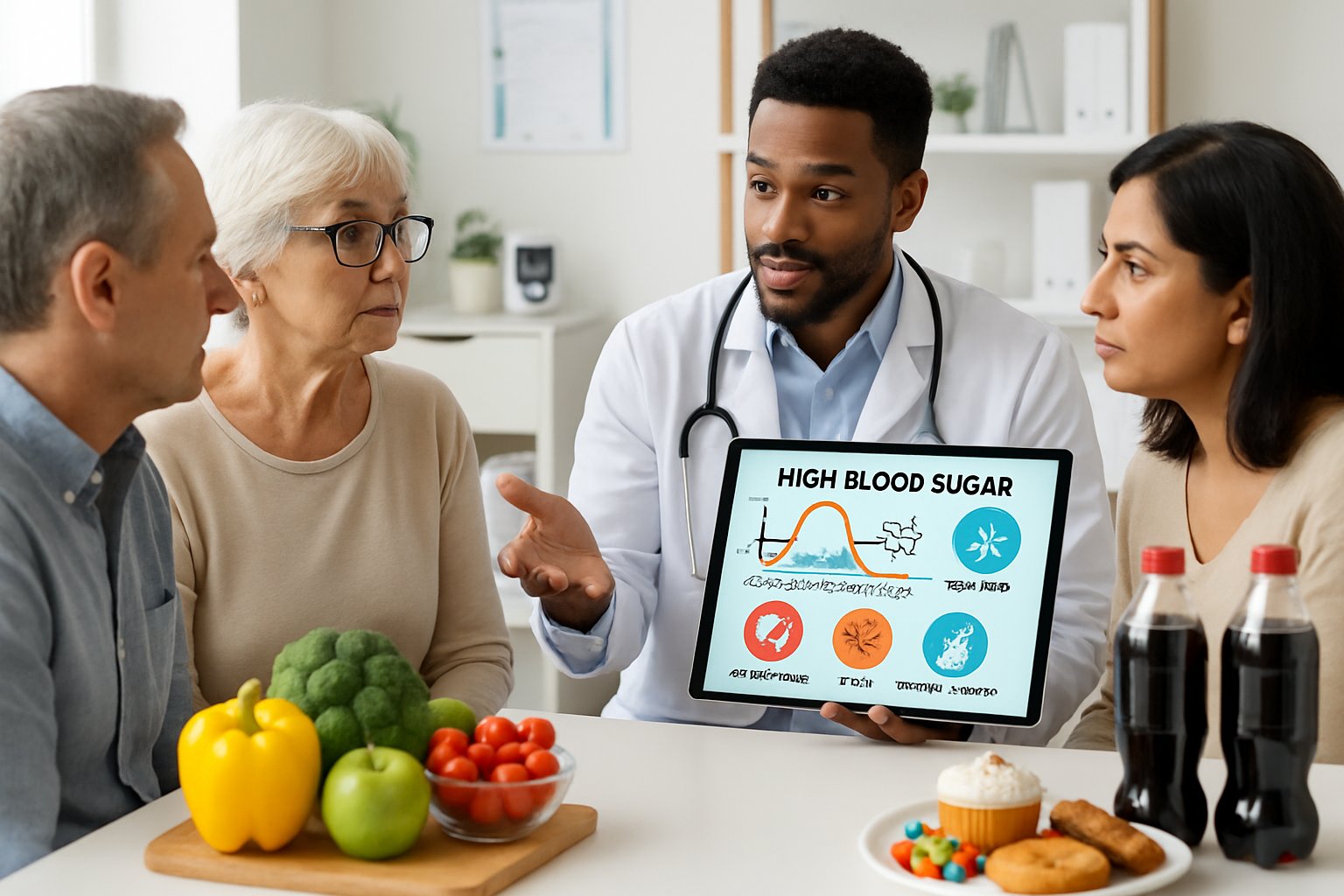
High blood sugar develops when the body cannot produce enough insulin or use it properly. Common triggers include eating too many carbohydrates, missing medications, experiencing stress or illness, and having conditions like prediabetes.
Dietary Factors and Carbohydrate Intake
Food choices directly affect blood sugar levels. Carbohydrates break down into glucose in the bloodstream faster than other nutrients.
Simple carbohydrates cause rapid blood sugar spikes. These include:
- White bread and pasta
- Sugary drinks and candy
- Pastries and desserts
- White rice
Complex carbohydrates raise blood sugar more slowly but still require careful monitoring. Examples include whole grains, beans, and starchy vegetables.
Portion size matters as much as food type. Large meals can overwhelm the body’s ability to process glucose effectively.
Timing also plays a role. Eating irregular meals or skipping breakfast can cause blood sugar swings throughout the day.
People with diabetes need to balance carbohydrate intake with their medication schedule. Those without diabetes can still experience high blood sugar without diabetes[6] from poor dietary choices.
Missed Medication or Insulin
Skipping diabetes medications is a leading cause of high blood sugar episodes. Each medication works differently to control glucose levels.
Insulin-dependent individuals face immediate risks when doses are missed. Type 1 diabetes patients cannot survive without insulin injections.
People with type 2 diabetes may take several medications. Missing even one dose can disrupt blood sugar control for hours or days.
Common medication errors include:
- Taking expired insulin
- Incorrect injection timing
- Wrong dosage amounts
- Equipment malfunctions with insulin pumps
Lifestyle changes can affect medication needs. Weight loss, increased exercise, or dietary modifications may require dosage adjustments.
Stress and illness can increase insulin resistance. This means regular medication doses may not work as effectively during these times.
Stress, Illness, and Hormonal Changes
Physical and emotional stress trigger hormone release that raises blood sugar. The body produces cortisol and adrenaline during stressful situations.
Acute illness causes temporary blood sugar spikes in healthy individuals. Common triggers include infections, injuries, and surgical procedures.
Chronic conditions create ongoing hyperglycemia challenges[1]. Examples include autoimmune diseases, chronic pancreatitis, and cystic fibrosis.
Hormonal disorders affect insulin function:
- Cushing syndrome increases cortisol production
- Growth hormone excess from acromegaly
- Pregnancy hormones causing gestational diabetes
Certain medications cause temporary insulin resistance. Corticosteroids, some blood pressure drugs, and psychiatric medications can elevate glucose levels.
Stress management becomes crucial for blood sugar control. Regular exercise, adequate sleep, and relaxation techniques help reduce cortisol production.
Prediabetes and Other Risk Factors
Prediabetes affects millions of people who don’t realize their blood sugar is elevated. This condition increases the risk of developing type 2 diabetes.
Insulin resistance is the primary mechanism behind prediabetes. Cells become less responsive to insulin signals over time.
Obesity, especially belly fat, contributes significantly to insulin resistance. Physical inactivity worsens this condition by reducing muscle glucose uptake.
Genetic factors influence diabetes risk:
- Family history of diabetes
- Certain ethnic backgrounds
- Inherited metabolic disorders
Age increases diabetes risk as insulin production naturally declines. People over 45 face higher chances of developing blood sugar problems.
Lifestyle modifications can reverse prediabetes in many cases. Weight loss, regular exercise, and dietary changes improve insulin sensitivity effectively.
Sleep disorders and shift work disrupt hormone cycles that regulate blood sugar. Poor sleep quality affects glucose metabolism and increases diabetes risk.
What To Do When Your Blood Sugar Is High
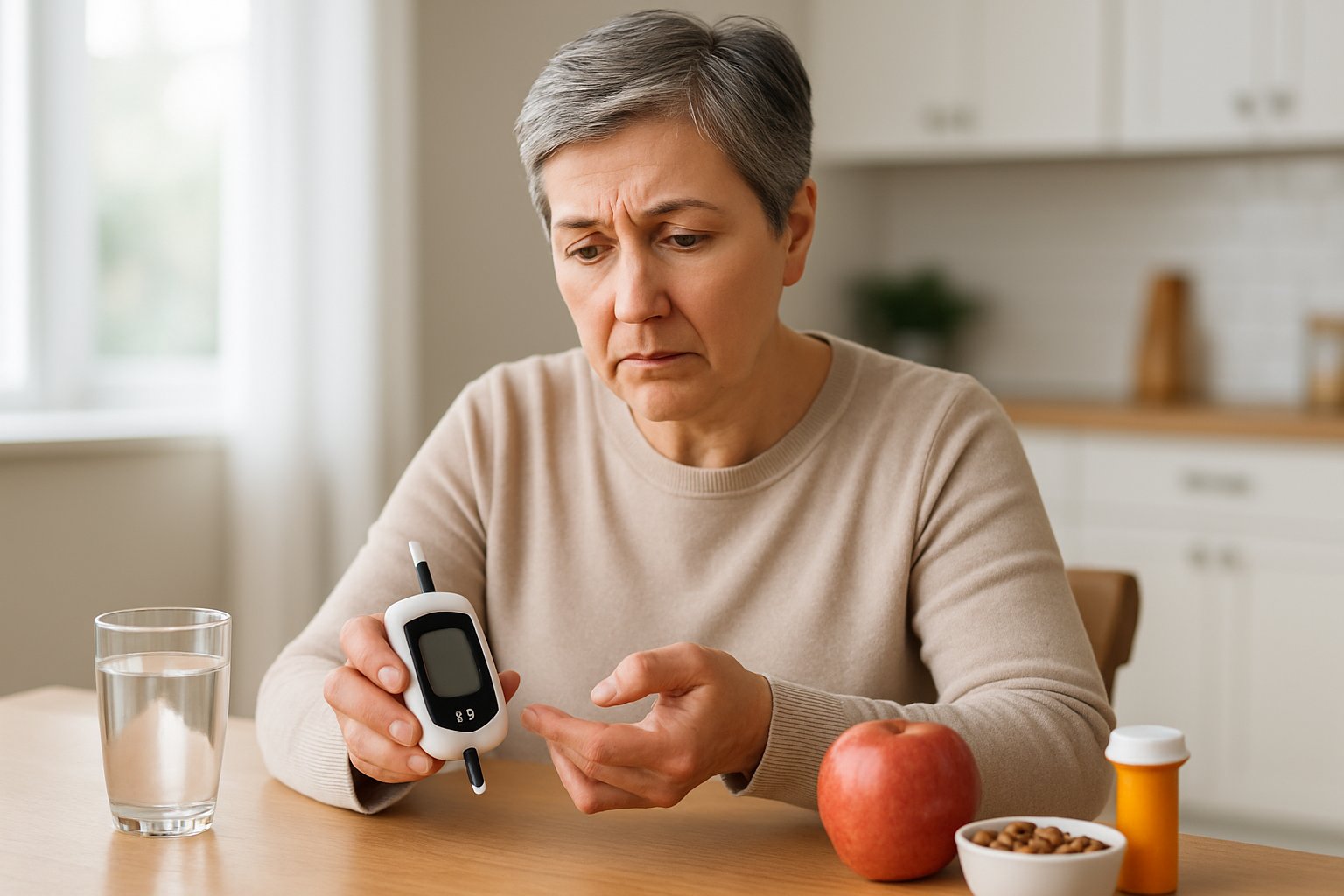
Taking quick action when blood sugar levels spike can prevent serious complications. The key steps include exercising if safe, checking for ketones, and knowing when to contact a healthcare provider.
Immediate Actions to Lower Blood Sugar
Exercise can quickly lower blood sugar levels in most cases. A brisk 15-20 minute walk or light physical activity helps muscles use glucose for energy.
Important safety rule: People should check their urine for ketones before exercising if blood sugar is above 240 mg/dL. If ketones are present, do not exercise[2] as this can make blood sugar go even higher.
Other immediate steps include:
- Drink water to stay hydrated and help flush out excess glucose
- Reduce food portions at the next meal
- Take prescribed insulin if a healthcare provider has given specific instructions
- Avoid sugary drinks and high-carb snacks
People with type 1 diabetes may need to adjust their insulin dose. Those with type 2 diabetes should focus on the non-medication approaches first.
Results typically show within 1-2 hours. If blood sugar remains high after trying these methods, medical guidance becomes necessary.
When to Seek Medical Help
Certain situations require immediate medical attention. Ketoacidosis is life-threatening[2] and needs emergency treatment.
Call 911 or go to the emergency room if experiencing:
- Shortness of breath
- Fruity-smelling breath
- Nausea and vomiting
- Very dry mouth
- Blood sugar above 400 mg/dL
Contact a healthcare provider within 24 hours for:
- Blood sugar consistently above 250 mg/dL
- Ketones in urine
- Symptoms that don’t improve with treatment
- Frequent high blood sugar episodes
The American Diabetes Association[2] recommends having a clear action plan from a healthcare team. This plan should specify exact blood sugar numbers that trigger different responses.
People taking insulin may need dosage adjustments. Never change medication doses without medical guidance.
Monitoring With Glucometers and CGMs
Regular blood sugar checking helps catch high levels early. Traditional glucometers require finger prick tests, while continuous glucose monitors provide real-time data.
Glucometer testing schedule:
- Before meals: Every 4-6 hours
- When feeling symptoms
- Before and after exercise
- At bedtime if taking insulin
Continuous glucose monitor benefits:
- Shows trends and patterns
- Alerts for high and low levels
- Tracks overnight changes
- Reduces finger prick testing
Target blood sugar ranges vary by individual. Most adults aim for 80-130 mg/dL before meals and under 180 mg/dL two hours after eating.
People should keep a log of their readings along with notes about food, exercise, stress, and medications. This information helps healthcare providers adjust treatment plans.
CGMs can send alerts to smartphones when blood sugar levels become too high or low. This early warning system prevents dangerous spikes from going unnoticed.
Long-Term Prevention and Blood Sugar Management

Managing high blood sugar requires consistent daily habits including regular exercise, balanced eating patterns, and working closely with medical professionals. These three key areas work together to prevent dangerous blood sugar spikes and reduce the risk of serious complications.
Adopting a Healthy Lifestyle
A healthy lifestyle forms the foundation of effective blood sugar control. Regular physical activity helps muscles use glucose more efficiently and improves insulin sensitivity.
Adults should aim for at least 150 minutes of moderate exercise per week. This can include walking, swimming, or cycling. Even short 10-minute walks after meals can help lower blood sugar levels.
Stress management plays a crucial role in managing diabetes. High stress levels trigger cortisol release, which can raise blood sugar. Deep breathing exercises, meditation, or yoga can help reduce stress.
Getting 7-9 hours of quality sleep each night is essential. Poor sleep affects hormones that control hunger and blood sugar. People with diabetes who sleep poorly often struggle with higher glucose levels.
Lifestyle changes don’t have to be dramatic. Small, consistent changes like taking stairs instead of elevators or parking farther away can make a difference over time.
The Role of Diet and Portion Control
A balanced diet with proper portion control is critical for blood sugar management. The plate method offers a simple approach: fill half the plate with non-starchy vegetables, one quarter with lean protein, and one quarter with whole grains.
Key dietary strategies include:
- Choosing complex carbohydrates over simple sugars
- Eating regular meals to prevent blood sugar swings
- Reading food labels to identify hidden sugars
- Limiting processed foods and sugary drinks
Portion control helps prevent blood sugar spikes. Using smaller plates, measuring cups, and food scales can help people learn appropriate serving sizes. Many people underestimate how much they eat.
Timing meals consistently helps the body maintain steady glucose levels. Skipping meals can lead to dangerous drops followed by spikes when eating resumes.
Working with a dietitian can provide personalized meal plans that fit individual preferences and medical needs.
Partnering With Your Healthcare Team
Regular communication with healthcare providers is essential for long-term blood sugar management. Doctors can adjust medications, monitor for complications, and provide guidance on managing diabetes[1] effectively.
Regular appointments should include:
- A1C tests every 3-6 months
- Blood pressure and cholesterol checks
- Foot and eye examinations
- Kidney function tests
Keeping detailed records of blood sugar readings, meals, exercise, and symptoms helps healthcare providers make informed treatment decisions. Many smartphone apps can track this information automatically.
People with diabetes should also work with specialists when needed. This might include endocrinologists for complex cases, ophthalmologists for eye health, or podiatrists for foot care.
Emergency action plans help people know when to seek immediate medical attention. Warning signs like persistent high blood sugar, nausea, or confusion require prompt medical care.
Frequently Asked Questions
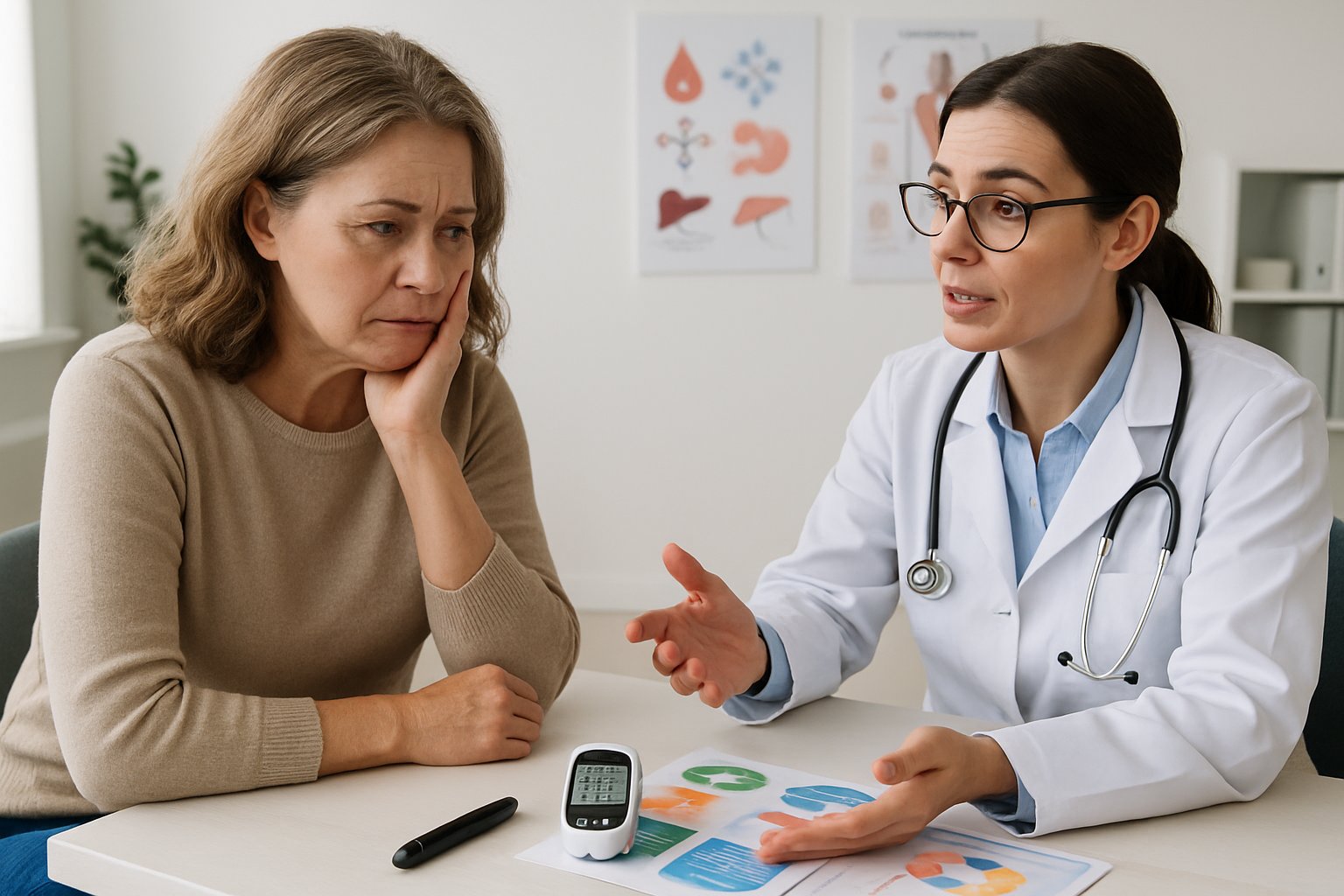
High blood sugar requires different approaches for immediate management versus long-term care. People experience various symptoms at different glucose levels, and complications can occur even in those without diabetes.
How can one immediately lower their blood sugar levels?
Drinking water helps flush excess glucose through urine. Light physical activity like walking can help muscles use glucose for energy.
People with diabetes should check their insulin dosage with their doctor. Taking prescribed diabetes medication as directed helps bring levels down.
Avoiding all carbohydrates temporarily prevents additional glucose from entering the bloodstream. This includes sugary drinks, bread, and fruit.
What are the common symptoms indicating elevated blood sugar?
Early symptoms of hyperglycemia include increased thirst and frequent urination[1]. People also experience headaches and blurred vision when blood sugar rises.
Hunger increases even after eating meals. Fatigue becomes more noticeable during daily activities.
Long-term high blood sugar causes weight loss and slow-healing cuts[1]. Skin infections and yeast infections occur more frequently.
What steps should be taken to manage high blood sugar?
Monitor blood glucose levels regularly using a glucose meter. Keep a log of readings to identify patterns.
Follow the meal plan recommended by a healthcare provider. Count carbohydrates and eat consistent portions at regular times.
Take medications exactly as prescribed by a doctor. Never skip doses or change amounts without medical guidance.
Exercise regularly to help muscles use glucose effectively. Even 15-20 minutes of walking after meals helps lower levels.
At what threshold does blood sugar become life-threatening?
Many people don’t experience symptoms until blood sugar reaches 250 mg/dL or higher[1]. However, danger levels vary between individuals.
Blood sugar above 400 mg/dL requires immediate medical attention. This level can lead to serious complications quickly.
Diabetic ketoacidosis can develop when high blood sugar is left untreated[1]. This emergency condition can cause coma or death without treatment.
What complications can arise from high blood sugar in individuals without diabetes?
Temporary high blood sugar can occur during illness or severe stress. The body releases stress hormones that raise glucose levels.
Dehydration happens as the body tries to remove excess glucose through urine. This can lead to dizziness and weakness.
Frequent infections may develop because high glucose weakens the immune system. Cuts and wounds heal more slowly than normal.
How does high blood sugar affect someone with type 2 diabetes differently than those without?
People with type 2 diabetes have bodies that don’t use insulin properly. Their cells resist insulin’s effects, making blood sugar control harder.
Insulin resistance requires the body to produce more insulin to regulate blood sugar[1]. Eventually, the pancreas cannot keep up with this demand.
Those without diabetes usually have temporary high blood sugar that returns to normal. People with type 2 diabetes need ongoing medication and lifestyle changes to maintain healthy levels.
Complications develop faster in people with diabetes. Chronic hyperglycemia can lead to nerve damage, eye disease, and kidney damage[1].
References
- Hyperglycemia (High Blood Sugar): Symptoms & Treatment. https://my.clevelandclinic.org/health/diseases/9815-hyperglycemia-high-blood-sugar Accessed October 23, 2025
- Hyperglycemia (High Blood Glucose). https://diabetes.org/living-with-diabetes/treatment-care/hyperglycemia Accessed October 23, 2025
- Fatigue and blurred vision. https://www.verywellhealth.com/hyperglycemia-symptoms-and-signs-11772280 Accessed October 23, 2025
- What High Blood Sugar Really Does to Your Body (Beyond Diabetes). https://thewell.northwell.edu/chronic-diseases-conditions/high-blood-sugar-impact Accessed October 23, 2025
- How Harmful Is High Blood Sugar. https://www.diabetescarecommunity.ca/living-well-with-diabetes-articles/diabetes-management-articles/managing-complications/harmful-high-blood-sugar/ Accessed October 23, 2025
- high blood sugar without diabetes. https://www.verywellhealth.com/causes-blood-sugar-rise-in-non-diabetics-5120349 Accessed October 23, 2025
